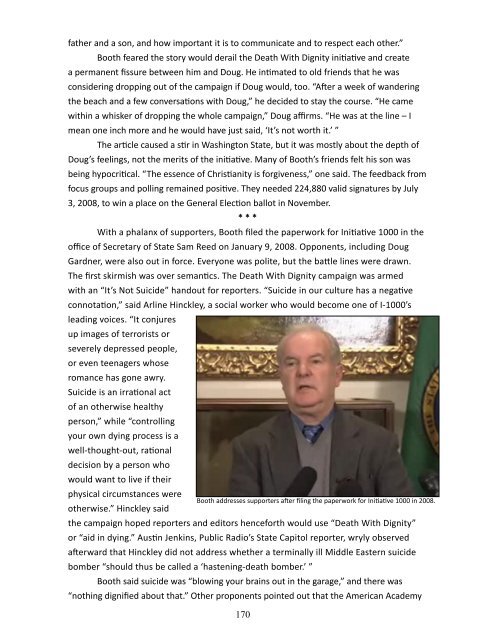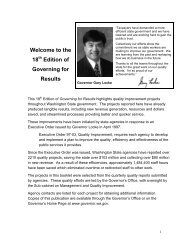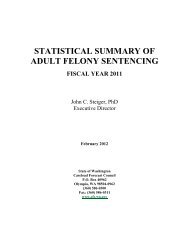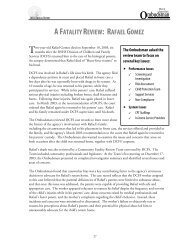BOOTH WHO? - Washington State Digital Archives
BOOTH WHO? - Washington State Digital Archives
BOOTH WHO? - Washington State Digital Archives
You also want an ePaper? Increase the reach of your titles
YUMPU automatically turns print PDFs into web optimized ePapers that Google loves.
father and a son, and how important it is to communicate and to respect each other.”<br />
Booth feared the story would derail the Death With Dignity initiative and create<br />
a permanent fissure between him and Doug. He intimated to old friends that he was<br />
considering dropping out of the campaign if Doug would, too. “After a week of wandering<br />
the beach and a few conversations with Doug,” he decided to stay the course. “He came<br />
within a whisker of dropping the whole campaign,” Doug affirms. “He was at the line – I<br />
mean one inch more and he would have just said, ‘It’s not worth it.’ ”<br />
The article caused a stir in <strong>Washington</strong> <strong>State</strong>, but it was mostly about the depth of<br />
Doug’s feelings, not the merits of the initiative. Many of Booth’s friends felt his son was<br />
being hypocritical. “The essence of Christianity is forgiveness,” one said. The feedback from<br />
focus groups and polling remained positive. They needed 224,880 valid signatures by July<br />
3, 2008, to win a place on the General Election ballot in November.<br />
* * *<br />
With a phalanx of supporters, Booth filed the paperwork for Initiative 1000 in the<br />
office of Secretary of <strong>State</strong> Sam Reed on January 9, 2008. Opponents, including Doug<br />
Gardner, were also out in force. Everyone was polite, but the battle lines were drawn.<br />
The first skirmish was over semantics. The Death With Dignity campaign was armed<br />
with an “It’s Not Suicide” handout for reporters. “Suicide in our culture has a negative<br />
connotation,” said Arline Hinckley, a social worker who would become one of I-1000’s<br />
leading voices. “It conjures<br />
up images of terrorists or<br />
severely depressed people,<br />
or even teenagers whose<br />
romance has gone awry.<br />
Suicide is an irrational act<br />
of an otherwise healthy<br />
person,” while “controlling<br />
your own dying process is a<br />
well-thought-out, rational<br />
decision by a person who<br />
would want to live if their<br />
physical circumstances were<br />
otherwise.” Hinckley said<br />
Booth addresses supporters after filing the paperwork for Initiative 1000 in 2008.<br />
the campaign hoped reporters and editors henceforth would use “Death With Dignity”<br />
or “aid in dying.” Austin Jenkins, Public Radio’s <strong>State</strong> Capitol reporter, wryly observed<br />
afterward that Hinckley did not address whether a terminally ill Middle Eastern suicide<br />
bomber “should thus be called a ‘hastening-death bomber.’ ”<br />
Booth said suicide was “blowing your brains out in the garage,” and there was<br />
“nothing dignified about that.” Other proponents pointed out that the American Academy<br />
170
















